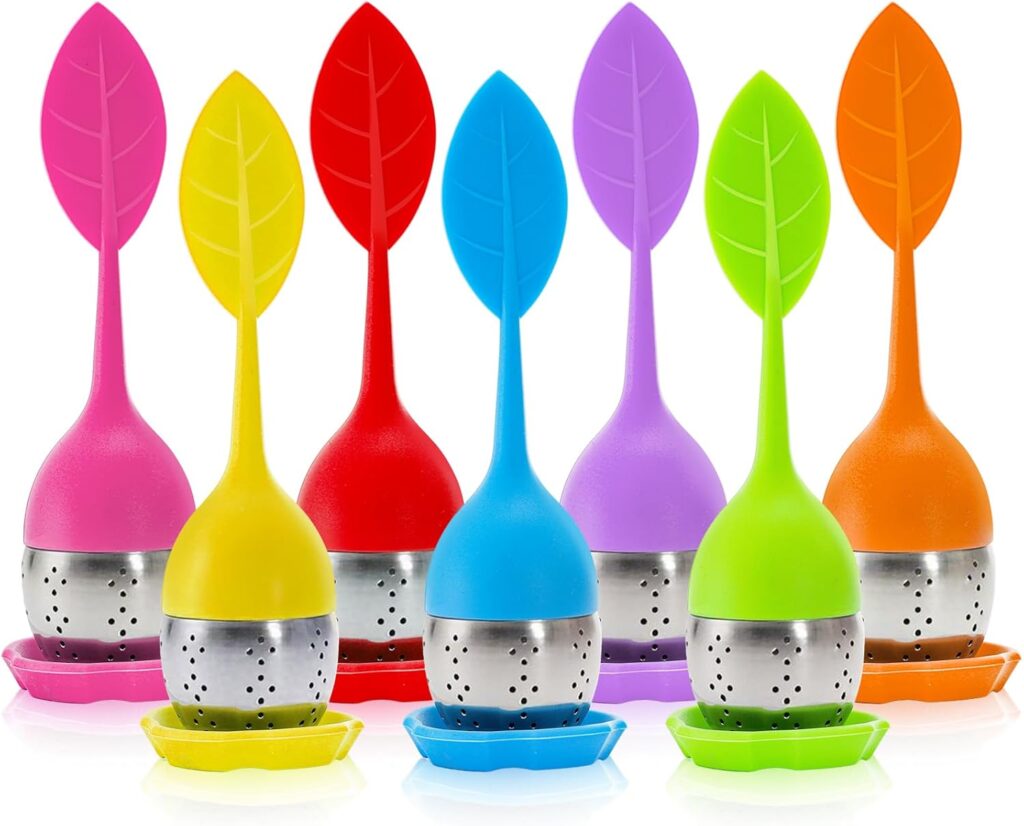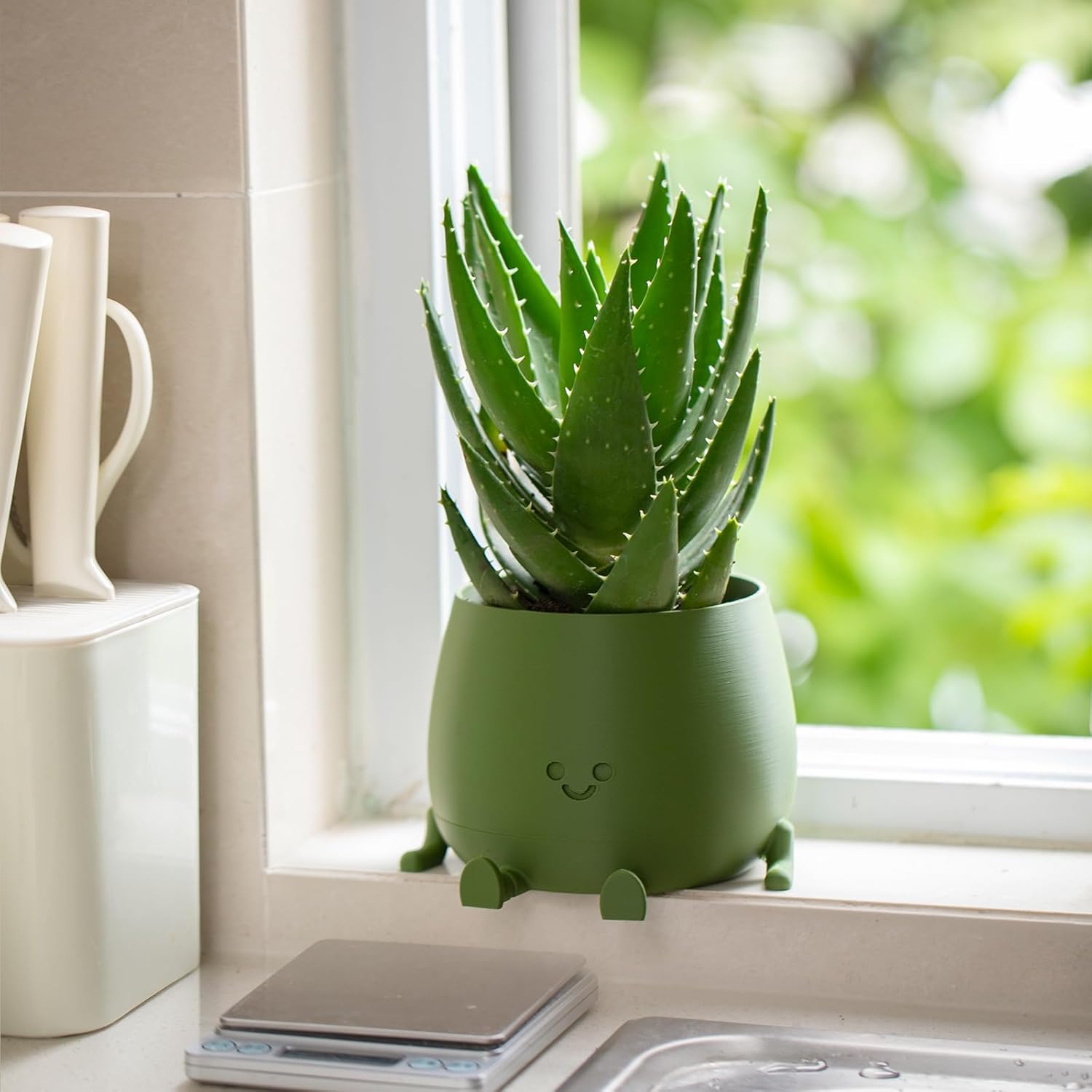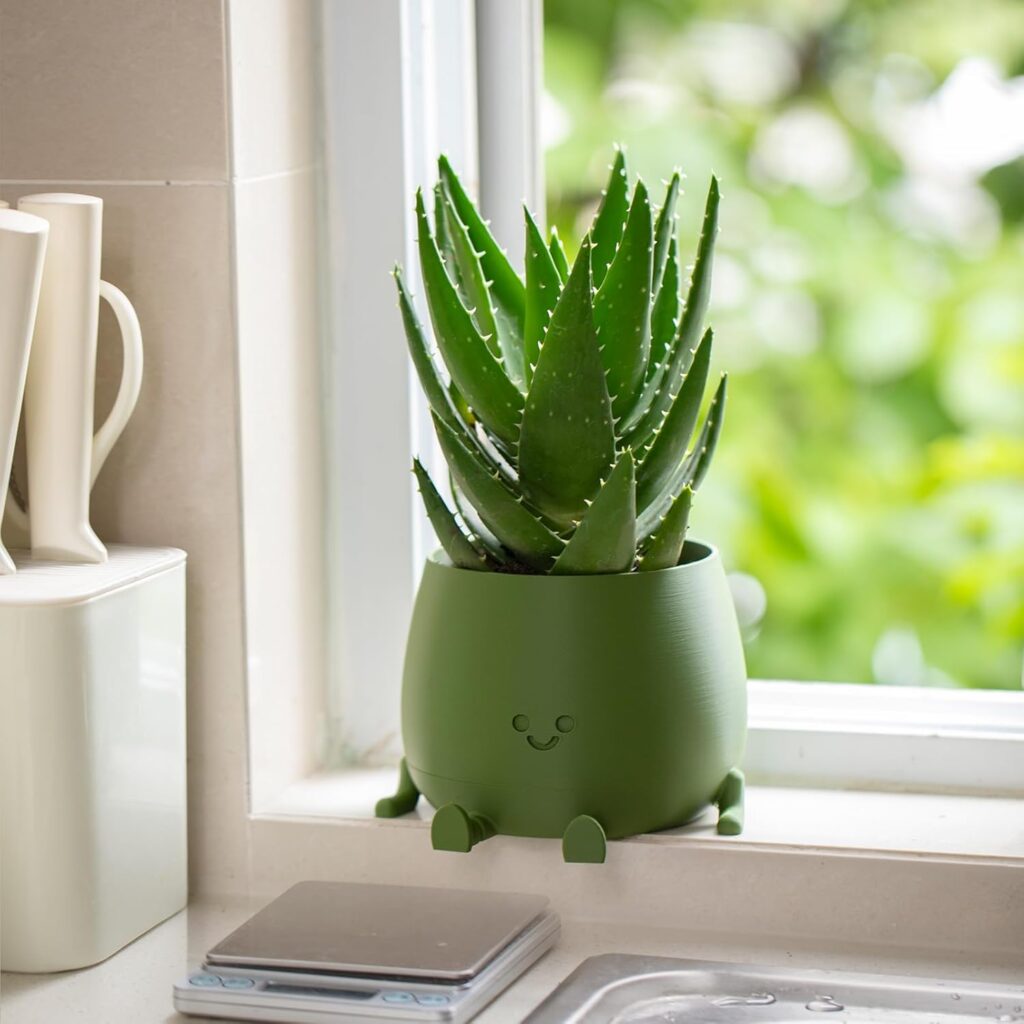Grow to Heal: 5 Indoor Plants That Boost Digestion and Gut Health
Welcome to SmallSpaceGardenPro.com, where we believe that even the smallest of spaces can cultivate incredible wellness! In our fast-paced lives, digestive discomfort and gut health issues are increasingly common. Many of us are seeking natural, gentle ways to support our bodies, and the answer might be closer than you think – perhaps even on your windowsill. The fascinating gut-brain connection highlights how a healthy digestive system is intrinsically linked to our overall mental and physical well-being. While a balanced diet and lifestyle are paramount, certain herbs and plants, revered for centuries in traditional medicine, can offer remarkable support for digestive health.
Growing these healing plants indoors offers a unique trifecta of benefits: it’s accessible, even if you only have a small apartment balcony or a sunny kitchen counter; it’s affordable, often costing less than store-bought supplements or even fresh-cut herbs; and most importantly, it empowers you to take an active role in your health and wellness journey. Cultivating these “gut-friendly” botanicals brings not only their therapeutic properties into your home but also the joy and stress-relief that comes with nurturing living greenery. This guide will introduce you to five amazing indoor plants known for their ability to boost digestion and support a healthy gut, along with tips on how to grow them successfully in your own small space. Let’s explore how you can grow to heal, one pot at a time!
Peppermint (Mentha × piperita) – The Soothing Digestive Aid
Peppermint, with its invigoratingly fresh aroma and distinctively cool taste, is perhaps one of the most well-known herbs for digestive support. Its use dates back thousands of years, with records from ancient Egypt, Greece, and Rome detailing its medicinal applications, particularly for soothing stomach ailments. This hardy perennial is a hybrid of watermint and spearmint and is remarkably easy to grow indoors, making it a perfect starting point for your gut-healthy indoor garden.
The active compound in peppermint, menthol, is largely responsible for its therapeutic effects on the digestive system. Even the simple act of inhaling its aroma can be calming, while ingesting it as a tea or in culinary preparations can offer more direct relief from common digestive discomforts. It’s a cheerful and resilient plant that will reward you with continuous growth for your wellness needs.
Peppermint’s Gut & Digestive Benefits:
- Soothes Upset Stomachs & Reduces Nausea: Peppermint tea is a classic remedy for an unsettled stomach and can be particularly effective in alleviating feelings of nausea.
- Relieves Bloating & Gas: Its antispasmodic properties help relax the muscles of the digestive tract, which can ease cramping, reduce bloating, and help expel gas.
- Supports Healthy Bile Flow: Peppermint can stimulate the flow of bile, an important digestive fluid produced by the liver that aids in fat digestion.
Growing Peppermint Indoors:
- Light: Prefers bright, indirect light but can tolerate some partial shade. An east or west-facing windowsill is often ideal.
- Watering: Likes consistently moist soil. Water when the top inch of soil feels dry, but avoid waterlogging.
- Container Size: A 6-8 inch pot is usually sufficient. Like all mints, it’s best to give peppermint its own pot as its roots can be quite vigorous and spread. Ensure good drainage.
- Ease of Care: Very easy. Harvest leaves regularly to encourage bushier growth.
Ginger (Zingiber officinale) – The Warming Anti-Inflammatory Root
Ginger, with its pungent, spicy aroma and warming flavor, has been a cornerstone of traditional medicine systems like Ayurveda and Traditional Chinese Medicine for millennia, especially prized for its digestive and anti-inflammatory properties. While you’ll be growing the plant for its rhizome (the underground stem we refer to as ginger root), the lush, tropical foliage of the ginger plant itself can be an attractive addition to an indoor garden.
Growing ginger indoors from a piece of store-bought rhizome is a surprisingly straightforward and rewarding process. You can enjoy the young, tender ginger with a milder flavor or let it mature for a more potent kick. Having fresh ginger on hand means you can easily add its powerful compounds, like gingerol, to teas, stir-fries, and smoothies to support your digestive wellness.
Ginger’s Gut & Digestive Benefits:
- Alleviates Nausea & Vomiting: Ginger is highly effective against various forms of nausea, including morning sickness, motion sickness, and chemotherapy-induced nausea.
- Stimulates Digestive Enzymes: It can help speed up stomach emptying and stimulate the production of digestive enzymes, aiding in the breakdown of food and reducing indigestion.
- Anti-inflammatory Properties: Ginger possesses potent anti-inflammatory compounds that can help soothe an irritated digestive tract and may benefit conditions like IBS.
Growing Ginger Indoors:
- Light: Prefers partial shade or filtered sunlight. Direct, intense sun can scorch its leaves. An east-facing window or a spot with bright, indirect light is good.
- Watering: Keep the soil consistently moist, especially during the growing season. Good drainage is essential to prevent the rhizome from rotting. Reduce watering in winter if growth slows.
- Container Size: A wide, relatively shallow pot is better than a deep, narrow one, as ginger rhizomes spread horizontally. A pot at least 12 inches wide and 8-10 inches deep is a good start.
- Ease of Care: Moderately easy. Start with a fresh ginger rhizome (look for pieces with “eyes” or buds) from the grocery store. Plant it a couple of inches deep in well-draining potting mix.
Fennel (Foeniculum vulgare) – The Carminative Seed & Leaf
Fennel, with its feathery, anise-scented leaves and seeds that carry a sweet, licorice-like flavor, has a long history of use as a digestive aid, particularly in Mediterranean and South Asian cultures. Ancient Romans believed it promoted longevity and strength, while in India, roasted fennel seeds are commonly chewed after meals to freshen breath and aid digestion.
While growing fennel indoors to full bulb size can be challenging in very small spaces, you can certainly cultivate it for its flavorful leaves and harvest seeds if you allow it to flower. The leaves can be used like dill, and even a small harvest of homegrown fennel seeds can be a potent addition to digestive teas. Its airy foliage also adds a delicate, attractive texture to your indoor plant collection.
Fennel’s Gut & Digestive Benefits:
- Relieves Gas & Bloating: Fennel is a well-known carminative, meaning it helps to expel gas from the intestinal tract and can significantly reduce bloating and discomfort.
- Soothes Infant Colic: Diluted fennel tea has traditionally been used as a gentle remedy for colic in infants (always consult a pediatrician first).
- Stimulates Digestion & Reduces Spasms: The compounds in fennel can help relax the smooth muscles of the digestive system, easing spasms and promoting overall digestive efficiency.
Growing Fennel Indoors (for leaves & seeds):
- Light: Fennel loves full sun. Provide at least 6 hours of direct sunlight daily. A south-facing window is best.
- Watering: Keep the soil consistently moist, especially when plants are young. Mature plants are somewhat more drought-tolerant but perform best with regular watering.
- Container Size: For growing primarily for leaves, a pot that is at least 8-10 inches deep and wide should suffice. If attempting to get it to flower for seeds, a larger container (5 gallons) would be better.
- Ease of Care: Moderately easy for leaves; more challenging to get a significant seed harvest indoors without optimal conditions.
Product Recommendation: TOPOLA Happy Face Planter
Aloe Vera (Aloe barbadensis miller) – The Soothing & Healing Succulent
Aloe Vera, instantly recognizable by its fleshy, spiky leaves filled with a cooling gel, is a renowned medicinal plant with a history spanning thousands of years. Egyptians called it the “plant of immortality,” and it has been used across cultures to treat burns, wounds, and various skin conditions. Less commonly known, but equally important, are its benefits for internal use, particularly for soothing the digestive tract.
Growing Aloe Vera indoors is very popular due to its low-maintenance nature and architectural beauty. Having a plant on hand means you have immediate access to its fresh gel, which can be far superior to processed store-bought versions for both topical and careful internal use. It’s a resilient succulent that thrives on a bit of neglect, making it perfect for busy individuals or beginner gardeners.
Aloe Vera’s Gut & Digestive Benefits:
- Soothes Digestive Tract Lining: The gel contains compounds that can help soothe irritation and inflammation in the stomach and intestines, beneficial for conditions like acid reflux or gastritis.
- Supports Healthy Bowel Regularity: Aloe vera latex (found just under the plant’s skin, use with caution and research) has traditionally been used as a laxative. The inner gel, however, is gentler and can support regularity by promoting healthy gut flora. (Focus on the gel for general gut health).
- May Promote a Healthy Gut Microbiome: Some research suggests aloe can act as a prebiotic, feeding beneficial gut bacteria, which is crucial for overall digestive health.
Growing Aloe Vera Indoors:
- Light: Bright, indirect sunlight is ideal. It can tolerate some direct morning sun, but harsh afternoon sun can scorch its leaves.
- Watering: Being a succulent, Aloe Vera is drought-tolerant. Water thoroughly only when the soil has completely dried out. Overwatering is the most common way to kill an aloe plant. Reduce watering significantly in winter.
- Container Size: A pot that is slightly wider than it is deep is good, as aloes have relatively shallow, spreading root systems. Terracotta pots are excellent for their breathability. Ensure excellent drainage.
- Ease of Care: Very easy, thrives on neglect.
Lemon Balm (Melissa officinalis) – The Cheerful Calmer of Nerves & Tummies
Lemon Balm, a member of the mint family, delights the senses with its bright, lemony fragrance and slightly sweet, citrusy taste. Historically, it has been cherished for its calming properties, used to reduce anxiety, promote sleep, and gently soothe digestive upsets, especially those related to stress or nervousness. Paracelsus, a famous 16th-century physician, believed it could completely revitalize a man.
This easy-to-grow perennial herb brings a cheerful, vibrant green to any indoor space. Its leaves can be used fresh or dried to make a wonderfully calming tea or added to fruit salads and desserts for a hint of lemon. Like its mint cousins, it can be quite vigorous, so containing it in a pot indoors is ideal for small space gardeners.
Lemon Balm’s Gut & Digestive Benefits:
- Eases Stress-Related Digestive Issues: Known for its calming effect on the nervous system, lemon balm can help alleviate digestive problems like indigestion or stomach cramps that are exacerbated by stress or anxiety.
- Reduces Bloating & Gas: Its carminative properties can help soothe an overactive digestive system, reducing bloating and trapped gas.
- Supports Overall Digestive Comfort: Often used in herbal blends to gently support digestion and ease discomfort after meals.
Growing Lemon Balm Indoors:
- Light: Prefers full sun to partial shade. An east or west-facing window providing several hours of light is good. It can get a bit leggy in too much shade.
- Watering: Likes consistently moist soil, similar to mint. Water when the top inch feels dry.
- Container Size: A 6-10 inch pot is suitable. It can spread, so give it a little room or plan to divide it eventually.
- Ease of Care: Very easy. Harvest leaves frequently to encourage new growth and maintain a compact shape.
Why Gut Health Matters – More Than Just Digestion
A healthy gut is increasingly recognized as the cornerstone of overall wellness, extending far beyond simply processing the food we eat. Our digestive system is home to trillions of microorganisms, collectively known as the gut microbiome. This complex ecosystem plays a critical role in:
- Immune System Support: A significant portion of our immune system resides in the gut. A balanced microbiome helps train and support immune cells, protecting us from pathogens and reducing inflammation.
- Mental Health Connection (The Gut-Brain Axis): The gut and brain are in constant communication. An imbalanced gut microbiome has been linked to mood disorders, anxiety, and even cognitive function. Supporting gut health can positively impact mental clarity and emotional well-being.
- Nutrient Absorption: A healthy gut lining and diverse microbiome are essential for properly breaking down food and absorbing vital nutrients that fuel every system in our body.
- Long-Term Wellness: Chronic gut imbalances are associated with a range of health issues. Nurturing your gut through diet, lifestyle, and supportive herbs can contribute significantly to long-term vitality and disease prevention.
Incorporating gut-friendly plants into your indoor garden and daily routine is a simple, natural step towards cultivating this foundational aspect of your health.
How to Use These Healing Indoor Plants
Growing these beneficial herbs and plants is just the first step; integrating them into your daily routine is where the healing truly begins. Here are some simple ways to use your homegrown bounty:
- Fresh Herbal Teas: This is one of the easiest and most effective ways. Simply steep fresh (or dried) leaves of peppermint, lemon balm, or ginger slices in hot water. Fennel seeds can also be brewed into a tea.
- Smoothie Boosters: Add a few peppermint or lemon balm leaves, or a small piece of fresh ginger, to your morning smoothies for a digestive kick and fresh flavor. Aloe vera gel (the clear inner part only, in small, appropriate amounts) can also be added.
- Culinary Delights: Finely chop fresh peppermint, fennel leaves, or lemon balm to add to salads, fruit salads, yogurts, or use as garnishes. Ginger is a staple in stir-fries, soups, and marinades.
- Simple Infused Water: Add sprigs of mint or slices of ginger to your water bottle for a refreshing and subtly therapeutic drink throughout the day.
- Aloe Vera Gel (Topical & Internal): Harvest fresh aloe gel for soothing skin irritations or (after proper research and ensuring it’s the correct part of the leaf) in very small quantities for internal soothing.
To make preparing your herbal remedies even easier, consider these helpful tools:
Product Recommendation: Bekith 7 Pack Silicone Tea Infuser

I highly recommend an infuser set. I separate mine by which type of tea goes in them. It makes my tea time much more organized.
Conclusion: Cultivate Your Way to a Happier Gut
Your journey to improved digestive health and overall wellness can indeed start in a small pot on your windowsill. The five plants we’ve explored – Peppermint, Ginger, Fennel, Aloe Vera, and Lemon Balm – offer more than just a touch of green to your indoor space; they are potent natural allies for your gut. Growing them indoors is not only a practical way to ensure a fresh supply of these healing botanicals but also a deeply rewarding activity that connects you with the natural world and empowers you to take charge of your well-being in a tangible, affordable way.
Don’t feel you need to start with all five at once. Choose one or two that resonate most with your needs or appeal to your senses. Perhaps the calming aroma of Lemon Balm calls to you, or the robust, digestive-soothing power of Ginger feels like the right fit. The beauty of indoor herb gardening, especially in small spaces, is its scalability and adaptability. As you gain confidence and experience the benefits firsthand, you can gradually expand your healing indoor garden. The simple act of nurturing these plants can be a daily reminder of your commitment to your health, offering moments of mindfulness and the profound satisfaction of harvesting something you’ve grown with your own hands. So, embrace the opportunity to grow to heal, and let your small space become a source of vibrant health and flavor.



Leave a Reply